MJ Acoustics REF 200-SR and Master-Class Ascot-SR
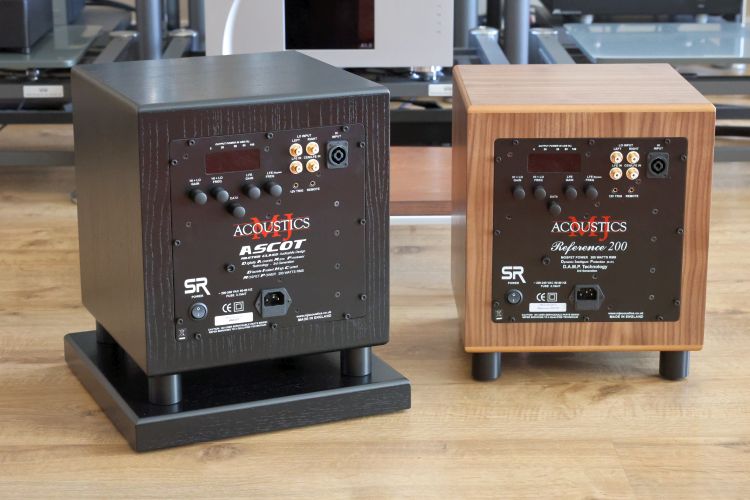
Review samples supplied by Boelsz Audio
Retail Prices in the Netherlands at the time of review:
REF 200-SR
In standard real wood veneer finish: 1395 euro
In Satin/ RAL/ High gloss finish: 1895 euro
Master-Class Ascot-SR
In standard real wood veneer finish: 2895 euro
In Satin/ RAL/ High gloss finish: 3395 euro
Back Story
It was back in 2009 when I purchased my first pair of subwoofers. Indeed, I went straight for a pair instead of the single one. Besides the REL Quake II being relatively inexpensive, there was a profound yet non-acoustical reason for needing two, which was that I could only position a sub (or a pair) to the far left and far right of the 5 audio racks that I used side by side at that time. The main reason for getting them at that time was to augment the small wall-mounted LCR speakers for the home cinema section. But of course, I couldn’t resist also trying them for the main speakers, and to my surprise, that sounded much better than I had anticipated. Ultimately, though, neither the Quake II’s nor the Strata III’s that I got later, blended quite as well with the main speakers as I wanted, so their use remained limited to the surround system.
Over the years, I have tried countless speakers, small, large, and larger still, and achieved fabulously deep and lush bass with the door-size Apogee Diva, immense punch and dynamics with the Wilson WP8, and even more staggeringly good bass with the Martin Logan ESL15A. But ultimately, all speakers have their pros and cons. I am actually quite bass-oriented, but none of these speakers were quite as coherent, nimble, articulate, or even-handed as I desired. Ultimately, I decided I would rather have good bass with limited depth than deep bass if it’s incoherent or boomy.
When I added a pair of Magico S1 MkIIs to my Martin Logan main setup, it was instantly clear that they did not reach quite as deeply as the Logans. But still, I found myself listening to them more and more. At some point, I moved the Logans out of the way and found, to my surprise, they scaled to the same heights as the Logans but with even more precision and better coherence. Of course, the S1 MkII’s output drops fast below 40Hz but the bass that they produce down to that point is of very good quality. I’ve tried the next model up in the Magico range, both the older S3 as well as the latest S3 MKII, but neither sounded as pure, as airy, or as effortlessly spacious as the S1 MkII. Thus, these relatively small speakers have remained and I’ve been very happy with them for almost 4 years now.
Meanwhile, I have paid a lot of attention to my room using various acoustic measures such as R.T.F.S Big Block bass traps and SIRRaH diffusers and subsequently propelled forward by insights gained from a visit of Rick Paap of Dynamic Solutions. Among others, this led to the addition of CD and LP racks along the left side wall and part of the rear wall, as well as the reinforcement of my floor-to-ceiling glass window sections on the right side. All this led to a much more even bass response as well as the Magicos sounding much fuller now that the glass wall was no longer robbing the right speaker of its bass power.
Although there were no more obvious issues, I always kept craving an octave or two of extra bass extension. So, when Jack Boelsz approached me to let me know that he had acquired the dealer rights for MJ Acoustics subwoofers, I was all ears.
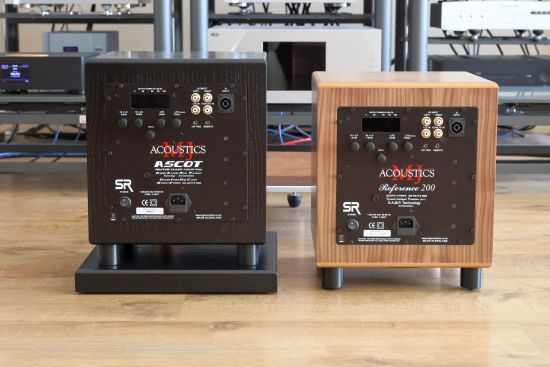
MJ Acoustics
Even though the company has been around for 20 years, to me, it seems that MJ Acoustics have been flying under the radar in the Netherlands. But as my experience with the brand has confirmed, they are well deserving of our full attention. Established in 1998, MJ Acoustics released their first product in 2000. The company sought new ways of doing things and this led to the brand being the first to offer presets and remote control for adjustment from the listening position, all the way back in 2004. Today, MJ are proud to design, develop, and assemble their own amplifier modules, drivers, and cabinets and they are quite unique for offering twin independent analog crossovers for Hi/Low and LFE inputs. MJ uses carefully designed custom drivers with long travel suspensions to very quickly reproduce bass transients with very low resonance.
The company consciously does not use DSP because that introduces delays and can lead to sonic degradation. After all, with DSP (note the D for digital), the analog input is digitized, processed, and made analog again before it is fed to the woofer. I am aware of the controversy of this subject but as a previous owner of the second-most highly ranking hybrid Martin Logan model that incorporates ARC digital processing, I can attest to the feeling of the sound taking on kind of a stilted and mechanical quality with the processing enabled. Sure, with DSP, it is relatively easy to counteract many room-induced issues, but as with everything in life, there is a price to pay. And of course, it is always better to prevent issues than to try and correct them later. DSP has many advantages and I think it is really great for home theater use, but based on my experiences so far, it is not ideal for stereo music reproduction.
The MJ subwoofer cabinets are built from substantial, heavy grade medium density fibreboard (MDF). The highest-grade European-sourced MDF is specified for its superior sonic- and aesthetic qualities. Veneers are glue-bonded depending on the customer’s chosen finish. Any color paint choice is available and the cabinet lacquers are specified Polyurethane twin-pack products from Italy.
An interesting side note concerns the power ratings for the built-in amplifiers. As it is not uncommon to see 1000-Watt Class-D designs in competing products, one could wonder why most MJ products don’t. The answer is that 20 years of design and scientific experimentation have yielded an ideal combination of low moving mass and strength in the bass drivers, which results in the overall design being more electro-mechanically efficient. Greater efficiency results in more output from less input power. In achieving higher efficiency, a faster moving cone assembly is yielded, which provides the speed and agility that is required to match high-end audiophile loudspeakers.
Whereas most competitors provide a phase adjustment of either 0 or 180 Degrees, MJ subs offer continuously adjustable phase control, ensuring that the ideal setting can always be found. As I was to find out, this feature proved to be absolutely indispensable for my situation.
The cherry on top is that all but the entry-level MJ subwoofers offer not only Infrared remote control, but also a fully-fledged smart remote App for Android and iOS.
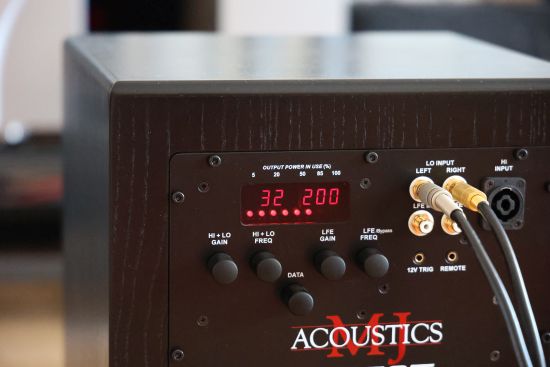
Filtering Control
Quite uniquely, MJ subs allow the user to set the cutoff frequency (the point at which the sub crosses over to the main speakers) anywhere from 20 Hertz up to 120 Hertz in 121 discrete steps. Very nearly all rivals only offer cutoff down to 30Hz, and all too often, it’s even 45Hz or 50Hz, sometimes even higher. This ultra-low filter ensures that an MJ sub can be integrated into virtually any system, no matter how large the main speakers are.
Further, a second-order variable low-pass filter that makes use of a combination of Butterworth and Bessel functions was chosen for the most linear phase response. An additional fixed second-order Bessel filter follows the variable filter, removing unwanted midrange signals that, if left unfiltered, cause midrange coloration of the main speakers. All filtering is performed in the analog domain using high-quality matched components with tight tolerances to ensure the highest possible performance.
High-Level Input
The High-Level Input refers to using the amplifier’s speaker output or even the end of the speaker cable, for driving the subwoofer’s input. All MJ subwoofers offer this option, as well as low-level inputs. As I always understood it, the promoted benefit of this was that the sub receives the very same signal as the main speakers, purportedly leading to a more uniform performance between the sub and speakers. To me, this has always seemed like a trade-off. Yes, you are feeding the subwoofer the same signal as the main speakers, but that signal has also traveled down a speaker cable and then follows attenuation inside the subwoofer, followed by another pre- and power amplification stage. To me, that feels less direct and purist than sending the preamp signal to the main power amplifier as well as the amplifier in the sub.
If the main amplifier or the speaker cables have a strong character, then I can understand the logic in making sure that the sub receives the same sonic fingerprint. But with exceedingly neutral equipment, I don’t see what benefit there could be.
Reading up on the MJ website about the technology, however, I found a compelling explanation for the benefits of using the High-Level inputs:
“Firstly, in the case of a preamplifier with only one set of outputs, it is simply absurd to have a very high-quality preamp in your system and then load it with a sub in parallel with the power amplifier. There are circulating currents within the signal ground and these can cause mutual coupling within the signal ground of the preamp. At this stage, the delicate signals are at their most vulnerable. The direct connection between the pre and power-amp is the best choice for an audiophile connection. More modern and costly pre-amplifiers provide for an additional set of outputs that are independent and fully buffered from the main set and duplicate this output. This type of connection is also excellent”.
“Secondly, the overall quality of reproduction in a system consists of the main speakers, the amplifier, and the room acoustics. Change any one of these and the sound will change. Ensuring the sub receives the same quality and dexterity of bass as the main speakers, helps to achieve this”.
I’ll admit that the first argument sure makes a lot of sense. But the CH Precision L1 preamplifier does indeed have separately buffered outputs, so that’s how I connected the subs.
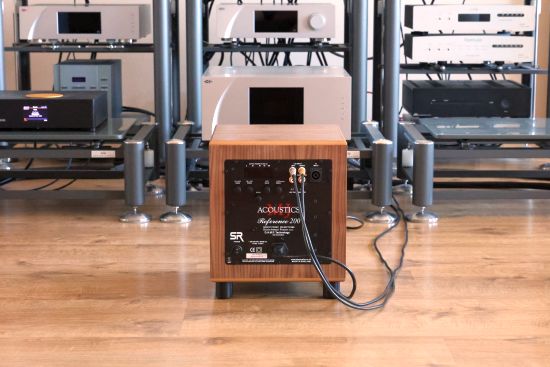
REF 200-SR
The REF 200 is the bigger brother of the REF 100 and is also a member of the MJ Acoustics Reference series. It employs the same 250 mm ultra-long throw driver but the slightly larger cabinet (300 x 300 x 355 mm) and more powerful amplifier make this the ideal sub-bass support for audiophile stereo systems in small and medium-sized rooms.
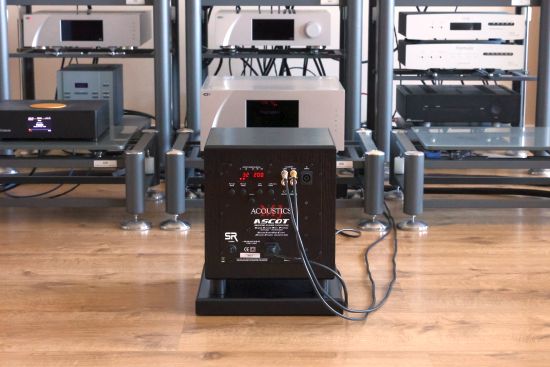
Master-Class Ascot-SR
For the top-of-the-line Master-Class Series, MJ make sure that each part of the bass driver is matched for weight and accumulated mass in the motor assembly components. The weights of the cone assembly and coil-spider assemblies are noted on each build and closely matched in pairs for each Master-Class product. This ensures that manufacturing tolerances are kept close to design specifications and also enables replacements to be assembled if required.
At 300 x 300 x 410 mm and housing a 250mm, special Master-Class series ultra-long throw driver, the Ascot is the smallest model of the Master-Class Series but it offers the same benefits as the larger Master-Class models, such as a fixed bottom plate, a front panel display in addition to the rear panel display, and IR remote control.
Crossover Point (cutoff frequency)
Since the Magico S1 MkIIs roll off below 40Hz, it might seem logical to set the sub(s) to that same frequency, but that leads to an overlap that is quite audible. You see, filters are inherently not perfect. It is impossible to literally cut off at the cutoff frequency. What happens is that the output is gradually lowered above that setting whilst the filter type dictates how steep the output level drops. The instinct might be to apply as steep a filter as possible (a brick wall filter), but as we’ve learned with CD player and DAC filters, very steep filters introduce quite severe phase shifts and other undesirable artifacts. The steepness of filters is displayed in so-called orders, see the below overview.
1st order: 6 dB/octave slope and 90 degrees phase shift
2nd order: 12 dB/octave slope and 180 degrees phase shift
3rd order: 18 dB/octave slope and 270 degrees phase shift
4th order: 24 dB/octave slope and 360 degrees phase shift
As it follows, on the surface, a 4th order filter seems to cut the cleanest. But it also introduces the largest amount of phase shift. Why is that important? Well, consider that in loudspeaker design the ideal is a single-point source, i.e. a single driver. When we add a tweeter, a crossover is required which inevitably introduces a phase shift at the crossover frequency. The more drivers and crossover points we add, the more shifts we get. Phase shift is bad for coherence and can greatly reduce spatial imaging, or in certain circumstances, artificially accentuate the spaciousness. This goes a long way toward explaining why it is easier to design a great-sounding monitor speaker than a large multi-driver floorstander.
As mentioned in the Filtering Control section above, MJ have devised a clever solution for this by using an additional fixed second-order Bessel filter that follows the initial variable filter, thus minimizing the unwanted midrange signals. The main second-order filter has a relatively gentle phase shift. Whilst the second filter that follows adds its own additional phase shift, this is placed higher up, where the output is already greatly reduced by the first filter.
Another point of attention in subwoofer design is that the woofer and cabinet can potentially add their own coloration, especially at higher frequencies. In turn, the room and its modes interact not only with the frequencies below the cutoff frequency but also in a substantial range above it. In my case, even with MJ’s clever dual crossover arrangement up to 70-80Hz when set to 33Hz.
All this might sound like a recipe for disaster and, indeed, subwoofer integration for high-end music purposes should not be taken light-heartedly, especially with very cleanly-performing main speakers. These complexities and side effects are exactly why I opted to live without subwoofers for so long. Try as I might but with the Quake IIs and Strata IIIs, I just never managed to get them properly integrated, which takes us full circle to the review at hand.
Whilst MJ Acoustics cannot break laws of physics, their dual-filter solution likely plays a major role in these subs’ remarkably clean and uncolored behavior. All it took was 15 minutes of setup and adjusting to realize that these subwoofers are in an entirely different ballpark!
But before I dive into the listening tests, let me explain how I set them up.
Next: Initial Listening
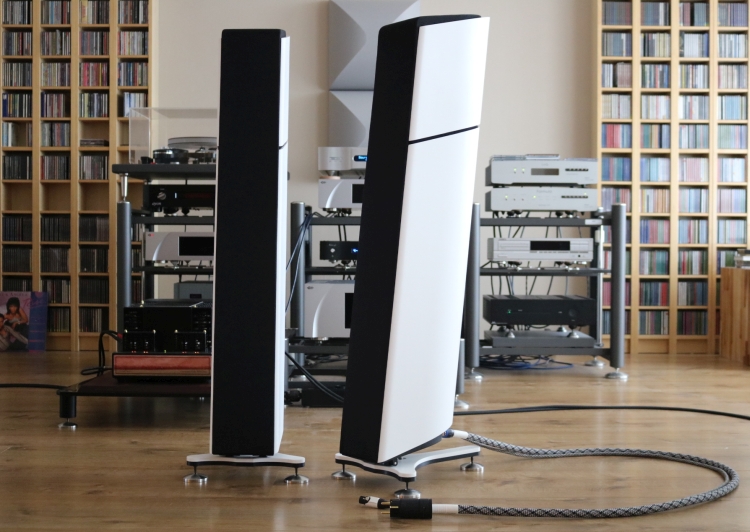
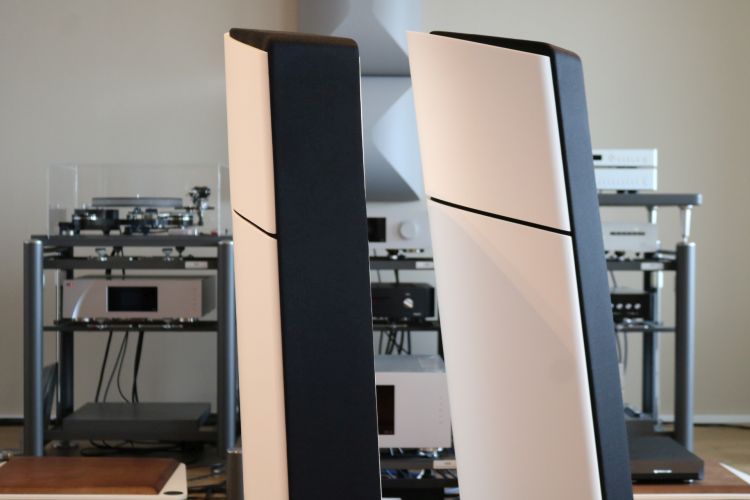
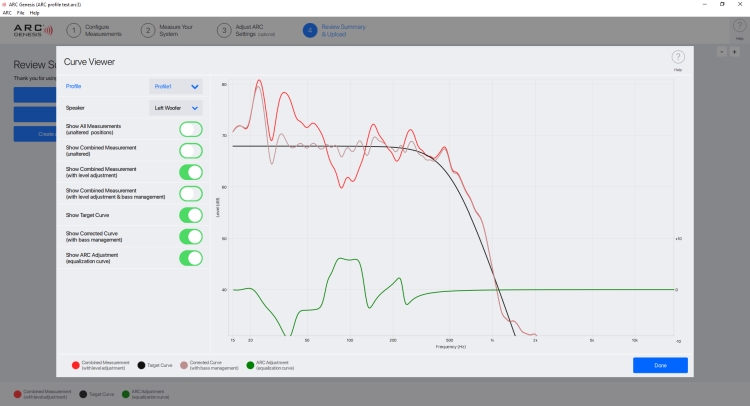
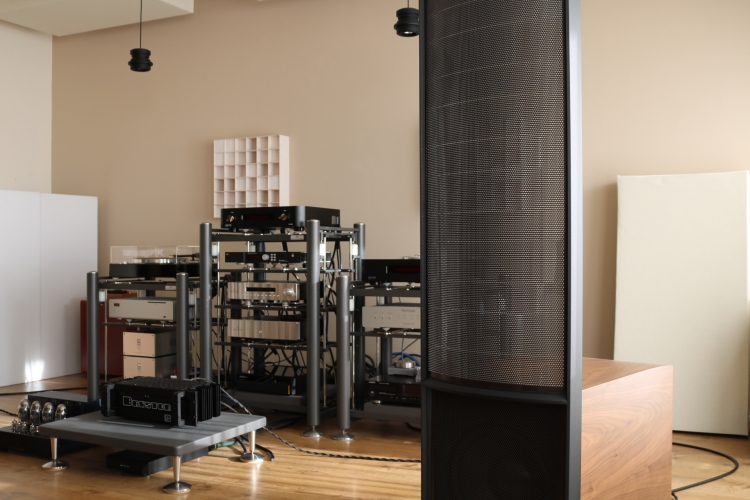
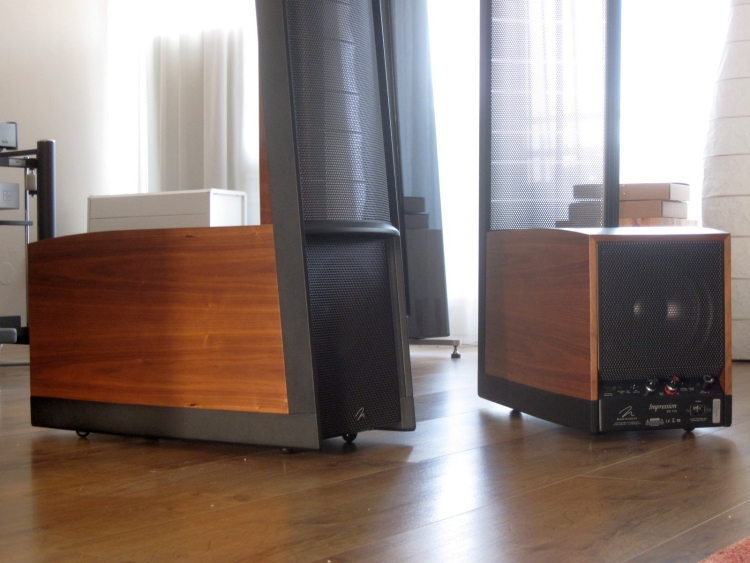
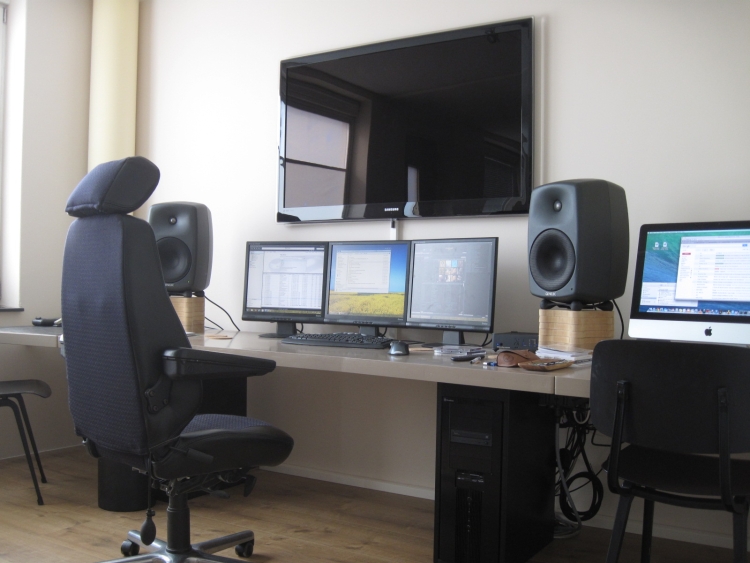
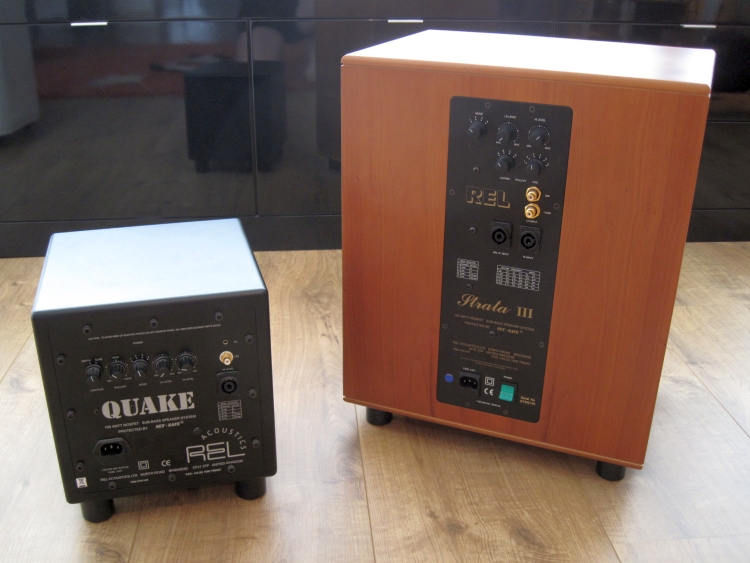
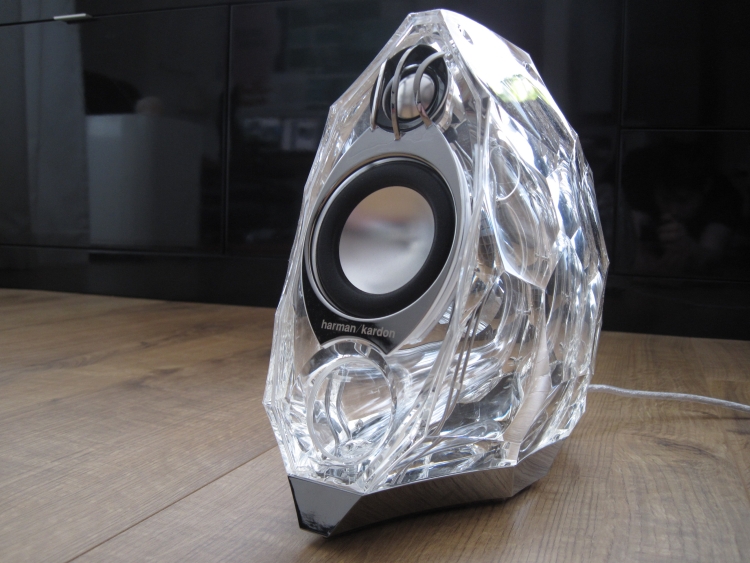
Thanks for the great review and the personal effort. I have been a fan of MJ Acoustics for a long time and they deserve this shot in the arm.
Hi Christiaan,
Happy 2023!
I’m writing to let you know that in response to your review I upgraded a pair of REL subwoofers (+ Dirac dsp calibration) to a pair of MJA Reference 200s.
I am overjoyed by the result! My system sounds a lot better than ever…
This is one of many times I have followed your advice to great effect. Thank you for what you do here! It has continued to make a difference to the quality of my experience of life… 🙂
Best wishes,
Jason
Hi Jason, all the best for 2023! That’s great to hear, thank you for the kind feedback:-)